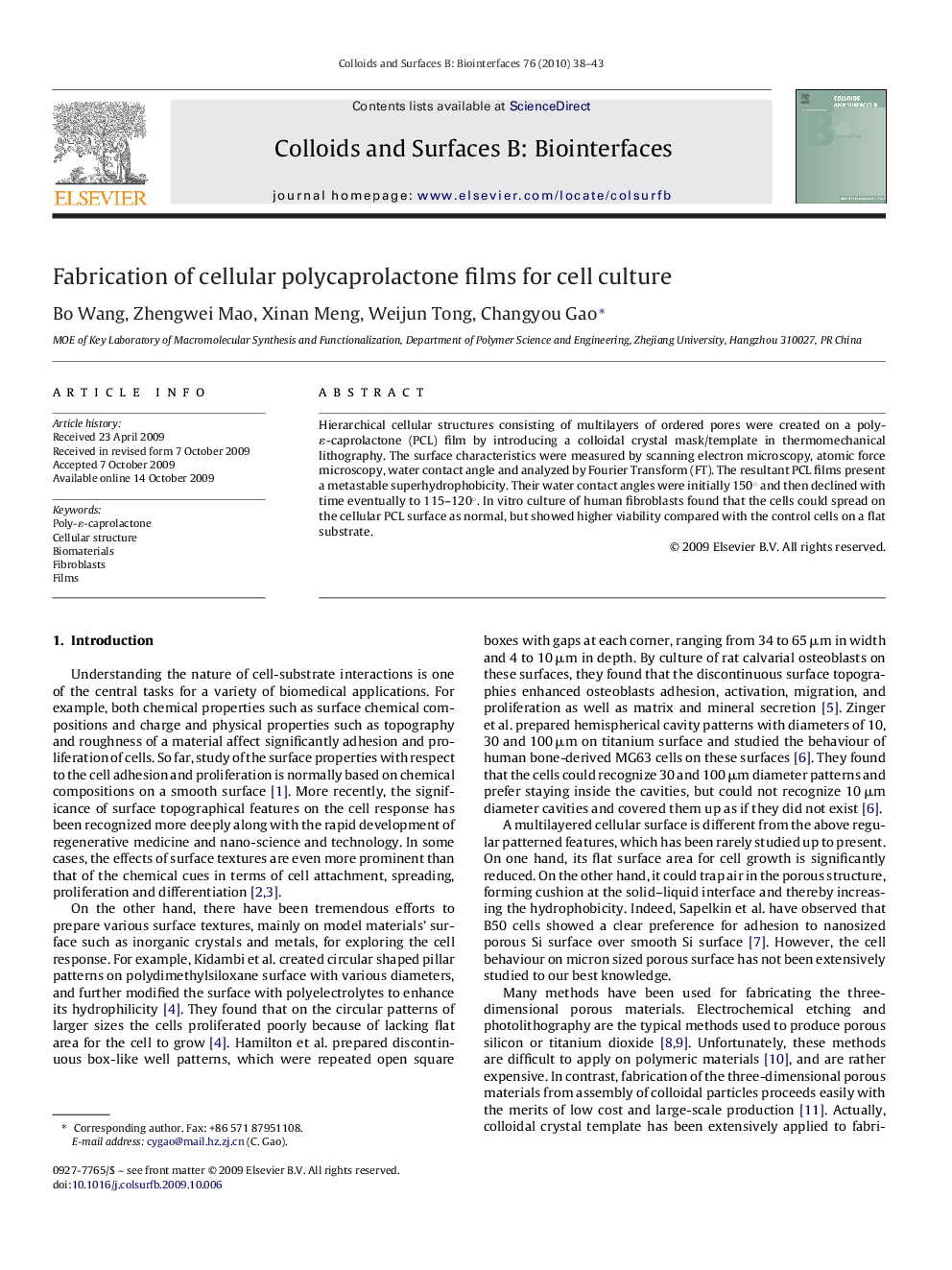| Article ID | Journal | Published Year | Pages | File Type |
|---|---|---|---|---|
| 601992 | Colloids and Surfaces B: Biointerfaces | 2010 | 6 Pages |
Hierarchical cellular structures consisting of multilayers of ordered pores were created on a poly-ɛ-caprolactone (PCL) film by introducing a colloidal crystal mask/template in thermomechanical lithography. The surface characteristics were measured by scanning electron microscopy, atomic force microscopy, water contact angle and analyzed by Fourier Transform (FT). The resultant PCL films present a metastable superhydrophobicity. Their water contact angles were initially 150° and then declined with time eventually to 115–120°. In vitro culture of human fibroblasts found that the cells could spread on the cellular PCL surface as normal, but showed higher viability compared with the control cells on a flat substrate.
Graphical abstractFibroblasts attached on multilayer cellular structures, which were fabricated by thermomechanical lithography with a colloidal crystal mask. The cell-material interface presented higher hydrophobicity according to water contact angle measurements, suggesting existence of air cushion at the interface.Figure optionsDownload full-size imageDownload as PowerPoint slide
